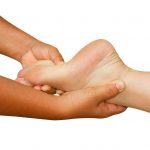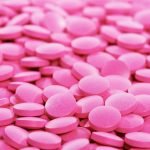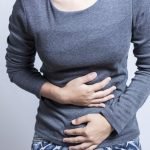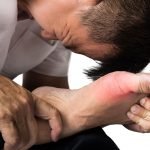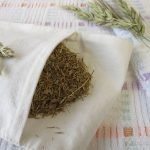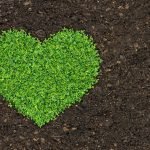The Short Bandage
Clinical Pearls
Sussanna Czeranko, ND, BBE
If you are hung up by the heels with the head in a bucket of water, that is one thing, but water-cure is a matter entirely different, so it may be of damp beds and wet clothing, compared with the wet sheet; the two are diametrically different.
-Joel Shew, 1849, pp. 78-79Whenever I am in doubt about a complaint, or if I want to ascertain the exact seat of a disease, the short bandage is always my truest and best adviser.
-Father Sebastian Kneipp, 1897, p. 110The bandage must be put on air-tight, but not too tight, as the patient may feel uncomfortable; if the bandage is too loose the steam escapes and the body feels chilly and a reaction cannot take place.
-Benedict Lust, 1913, p. 617
Vincent Priessnitz is well known in the naturopathic world for his “wet sheet wrap” treatment protocol. This procedure, however, had other iterations less well recognized but in his time equally used. For example, the Priessnitz “bandage” was considered by the early NDs as a universal remedy too. The Priessnitz treatment, also known as the wet sheet wrap or pack, was heralded by many who followed the various tools of the water cure path. The dread of the cold wet sheet wrap was no different in 1849 than today. The mere mention of being wrapped in a cold wet sheet “is enough to bring chills to the nervous and hysterical and at once suggests fearful ideas of sleeping in damp beds, damp clothing” (Shew, 1849, p. 78). As one of the many users of the procedure, Father Sebastian Kneipp extolled the virtues of cold wet applications, yet he realized that excesses could be as harmful as good. He wrote:
I warn against…too strong or too frequent application of water, for that which otherwise would be an advantage of the curing element, is thereby turned to injury, and the hopeful confidence of the patient is changed into fear and horror. (Kneipp, 1897, p. 6
Even today, the apprehension persists, and if we conduct our hydrotherapy practices, do we abandon the cold wet sheet treatment because of such fear and discomfort? A forgotten yet powerful treatment, the “short bandage” is the subject of this article and will help familiarize the reader with how the short bandage, constitutes a baby step toward the imminent wet sheet.
The famed wet sheet was popularized by Vincent Priessnitz, who discovered that cold water applications would subdue pain, cool the body, and assist in the evacuation of morbid matter. Priessnitz also established that “a moist cloth placed upon a part, covered with a dry one, to prevent evaporation (a cooling process) soon, from the warmth of the body, becomes soothing and warm: a sort of genial vapor bath is formed” (Shew, 1849, p. 80), much like a poultice. Priessnitz expanded this “poultice effect” to include the whole body. Another effect of the wet sheet was what was known as the “bleaching effect.” The body “is rendered whiter, softer and more pliable and morbid, and effete matters are removed” (Shew, 1849, p. 80).
Father Kneipp made much use of Priessnitz’ wet sheets and promoted their value with much reverence. Douches and gushes were the hallmark of Kneipp treatment, and the bandages followed closely behind.
There were five types of so-called bandages: head, neck, short, foot, and full bandages (Spanish mantle). As Kneipp explained:
Each bandage has its own special name…the bandages are quite different one from another, so is their effect different and yet in one thing they are in perfect unison, viz., in their power to dissolve, expel and absorb all foul matter. (1902, p. 382)
He added, “If healthy people would take a short bandage every week, or at least every fortnight, they would entirely prevent a great number of diseases” (Kneipp, 1897, p. 110).
The concept of the expulsion of foul or morbid matter was central to the early NDs who used water cure, thus the strong interest in any protocol that could assist in this important goal. Morbid matter is analogous to the contemporary environmental medical movement’s focus on environmental toxic effects. Today, the escalation of solvents, heavy metals, and pesticides and the thousands of man-made chemical pollutants bombarding the environment and contributing to the toxic body burden has grown to alarming proportions as our bodies increasingly become toxic reservoirs. Contemporary importance placed on blood tests has fine-tuned the naturopathic treatment plans in purging the chemicals out of human bodies. In the days of Kneipp, blood tests were unavailable. Yet, the association of toxic effects with the preponderance of disease was dealt with by changing the constitution of blood. The concept was outlined as follows:
According to Kneipp, all diseases are due to bad formation of the blood, for blood is the sap of life. Water has the power:
- To dissolve the morbid matters in the blood.
- To evacuate what is dissolved.
- To strengthen anew the enfeebled organism, and
- Restore a regular circulation. (Kneipp, 1903, p. 314)
Short Bandage
The short bandage was also referred to as the short body pack. It was similar to the wet sheet except that less of the body was encased in wet sheets and blankets. The advantage of the short bandage was that anyone can self-administer the treatment. Unlike the full-body wet sheet wrap, an attendant was not needed to tuck in the linens and to hermetically seal the patient’s body with warm blankets.
The difference between the short bandage and the lower bandage was where the extremities were placed. The lower bandage was more similar to the wet sheet pack because the legs and feet were encased in the application. However, in the wet sheet pack the arms were ensconced in the blankets, whereas in the lower bandage the arms were loose and outside of the blankets. The lower bandage was used for “complaints of the legs and the lower part of the body. It begins under the arms and reaches down over the feet” (Kneipp, 1897, p. 107). An important point for the lower bandage was to ensure that the patient’s shoulders were not exposed to cold, so a dry shirt was often worn during this treatment.
Although the short bandage did not cover the whole body, its scope of action encompassed significant elimination of accumulated toxins. Kneipp further explained about the short bandage, “It also operates favorably and in a purifying manner, on the kidneys, the liver, and especially on the bowels, which it purifies from shut up winds, troublesome gases, retained matters and superfluous water” (1897, p. 110). Kneipp pointed out that, although the short bandage had the advantage of being administered by the patient, it was also administered in naturopathic offices. As Lust (1910, p. 86) and Abbott (1912, p. 239) explained, to begin the short bandage in an office setting, the following items needed to be on hand: linen cloth or muslin, two or more wool blankets, feather or down comforter or duvet, bindings to secure the bandage, and water 60° to 70°F. The short bandage had many variations. For example, Lust would spread a blanket out on a bed with a wet linen or cotton muslin sheet draped over the blanket in one, two, or as many as four to six layers: “The linen sheet would be dipped into cold water and wrung out moderately” (1910, p. 86). He stated that the patient would have the wet cloth “wrapped around the body from under the armpits to the thighs or [above the] knees; this wet pack is surrounded by one or more layers of dry flannel, woolen or linen bandages” (Lust, 1910, p. 86). Lust was fond of the short bandage, proclaiming: “This bandage has been called a ‘universal remedy,’ there is almost no disease, acute or chronic, in which this simple treatment cannot find application and it has become, so to say, the starting point of naturopathy” (1913, p. 617).
The bandage could be applied either cold or warm. Kneipp insisted that “weak and aged persons and in general all those of poor blood, not only may, but ought to apply the bandage warm” (1897, p. 109). Secor, a contemporary of Lust’s, calling the bandage a compress, explained:
The cool compress is very valuable in the treatment of local congestion and inflammations, both superficial and deep. Through direct application it constricts the vessels of superficial areas, producing an almost immediate sedative effect, and by reflex activity it influences the visceral circulation. (1909, p. 125)
Although cold bandages were highly praised, Kneipp (1897, p. 110) also used warmed vinegar water to soak the wet linen in the wrap for patients with cramps who were chilled. Kneipp also advised those with weak bowels “to rub the abdomen either immediately before or after the short bandage, with lard or camphor-oil” (1897, p. 110). The time that a bandage or wrap remained on the patient determined the outcome. For the purpose of cooling a feverish temperature, the bandages were replaced as soon as they became dry or warm: “The rate of evaporation may be controlled by the dry blanket coverings which are used” (Abbott, 1912, p. 88).
Shew, who personally studied with Priessnitz, outlined two different effects from the wet sheet wraps or bandages, namely, to lower body temperature or to raise body temperature. To create a gradual and permanent cooling, he explained, the wraps are “changed as frequently as it becomes warm” (Shew, 1849, p. 80). Rather than take off the wrap for rewetting, a spray bottle was used to wet the wrap as it remained on the patient. It was very important to maintain moisture in the bandage for it to be clinically effective. If the patient needed to raise the body temperature, fewer linen layers and fewer woolen wraps were used. If warming was desired or pain relief, the wet cloths would “be left upon the body sufficiently long, a most delicious sensation of warmth is produced, while pains are assuaged and uneasiness removed” (Shew, 1849, p. 80). If the purpose of the application was to promote elimination, then the same directions were given as for raising the body temperature.
Lust expanded on the factors in determining a treatment. He wrote: “The amount of wet linen and dry flannel covering is to be governed by the [temperature of the fever], the strength of the patient, and the main object of the application” (Lust, 1910, p. 86). The number of layers of wet linen would vary between one and six. The more hardy and vital the patient was, the more layers could be used. Lust elaborated:
[These] wet linens [were] wrapped around the body, only loosely, covered by flannel, woolen or linen wrappers in order to protect the bed from becoming wet. . . . The packs were removed as soon as they become hot or dry. (1910, p. 86)
Kneipp also used decoctions of hayflowers and vinegar water in conjunction with the short bandages. Vinegar diluted with water would be used to permeate a linen cloth, which was placed on the area of cramps and pain before the short bandage was applied. As Kneipp (1897, p. 110) explained, warm bandages were more suitable than cold bandages for pain conditions. Hayflowers had a gentle yet powerful effect on detoxing the body of the encumbrances of morbid matter. Hayflowers, or Heublumen, “are the short hay which remains at the bottom of a hay stack” (Hartmann, 1905, p. 373). Kneipp described the “hay-flowers [as] all the remains of hay such as stalks, leaves, blossoms and seeds, even the hay itself” (1897, p. 43). When produced, a hayflower decoction appeared as “coffee-brown water [which] thoroughly opens the pores, and dissolves materials shut up in the body” (Kneipp, 1897, p. 65).
Cold vs. Ice
Kneipp emphasized: “I repeat again that I oppose absolutely any application of ice” (1901, p. 165). The temperatures of the water used with the bandages were definitely cold according to our standards today. Wet applications at less extreme temperatures such as 60° to 70°F can be sufficient to excite the blood flow in the body. Despite Kneipp’s fondness for cold water applications, he was completely opposed to extremes and especially was against the use of ice. He wrote, “Ice-cloths, and ice-bags or whatever the names of those things may be are entirely excluded in my department” (Kneipp, 1901, p. 165). Kellogg concurred with Kneipp about the use of cold temperatures: “To secure the most pronounced antithermic effects, water at 60° to 70°F should be employed. There is no advantage in using water at a lower temperature” (Kellogg, 1902, p. 615). If a patient became chilled during a cold sheet treatment, Shew advised that the patient “should come from the sheet, while yet feeling warm” (1849, p. 83).
In any case, cold wet applications in the form of the short bandages were heralded by the early NDs as a first-line treatment. The therapy has sadly drifted out of vogue and is not often seen as part of naturopathic practice these days, yet there was a time when it was “one of the most universally applied” (Kneipp, 1897, p. 109). Safe and efficacious for the weak, aged, and all those with poor blood, Kneipp praised the virtues of the short bandage. He found the short bandage to be indispensable in building a plan for a patient and in establishing the action to take. Kneipp assured us: “Whenever I am in doubt about a complaint, or if I want to ascertain the exact seat of a disease, the short bandage is always my truest and best adviser” (1897, p. 110).
Sussanna Czeranko, ND, BBE is the curator of the rare book collection at National College of Natural Medicine, in Portland, Oregon. She is currently compiling an 8-volume series on nature cure topics for the profession. She is also an adjunct faculty member of the Transformative Voice Institute in Portland, the founder of the Breathing Academy in Portland, and a founding board member of the Buteyko Breathing Educators Association. She is a licensed ND in Ontario, Canada, and in Oregon and is a graduate of Canadian College of Naturopathic Medicine, Toronto, Ontario. She has been in practice since 1994, incorporating nature cure modalities and tools into her practice with great success. Her Web site is www.breathingacademy.com.
References
Abbott, G. K. (1912). Elements of hydrotherapy for nurses. Washington: Review and Herald Publishing Assn.
Hartmann, I. (1905). The cold water treatment in general: The compress. The Naturopath and Herald of Health, 6(12), 372-378.
Kellogg, J. H. (1902). Rational hydrotherapy. Philadelphia: F. A. Davis Company Publishers.
Kneipp, S. (1897). My water cure. Kempten and Munich: Jos. Koesel Publisher.
Kneipp, S. (1901). Water applications. The Kneipp Water Cure Monthly, 2(6), 164-166.
Kneipp, S. (1902). Bandages and compresses. The Naturopath and Herald of Health, 18(9), 382-383.
Kneipp, S. (1903). Health incarnate. The Naturopath and Herald of Health, 4(11), 313-322.
Lust, B. (1910). The treatment of acute disease. The Naturopath and Herald of Health, 15(2), 85-86.
Lust, B. (1913). The Priessnitz or abdominal bandage. The Naturopath and Herald of Health, 18(9), 617-618.
Secor, W. L. (1909). Principles and practices of modern hydro-therapy. Chicago: Chicago Medical Book Company.
Shew, J. (1849). The water-cure manual. New York: Fowlers and Wells.






